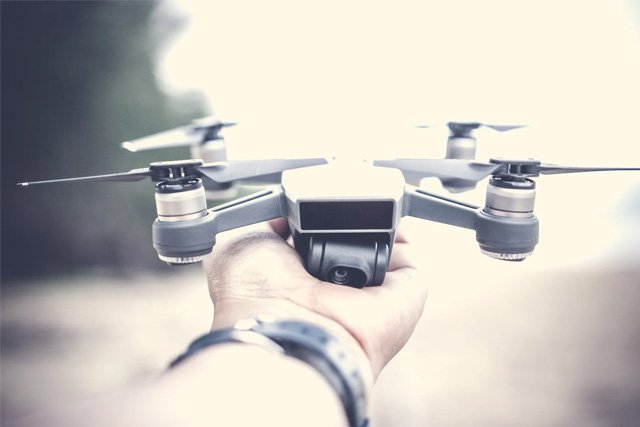After a well-received launch on the niche 3DO platform, The Need for Speed was ported to MS-DOS, PlayStation, Sega Saturn, and Microsoft Windows. It became one of the most successful games to use multi-media CD-ROM technology, with high-resolution photographs and exciting full-motion videos accompanying each race track.
How Drones Work

In a barely two-year-old sport, drone racing is “blowing up,” as the tech dudes say. In a brief time, the competition evolved from local park fliers to over 100,000 global FPV pilots, as per MarketWatch. The Drone Racing League, a new startup, aims to make FPV racing a lucrative spectator sport with $12 million in funding from notable investors like Stephen Ross and Matt Bellamy.
Pilots wear FPV goggles that display a live feed from the drone’s camera during a race. Racers navigate 3D courses with gates, ladders, and real-world elements like stadiums, malls, or power plants. To score, pilots must pass two checkpoints in a set time; the highest points determine the winner.
A racing drone must be incredibly responsive and precise to fly these high-speed drones. A slight lag or change in latency could mean disaster. That’s why most racing drone pilots practice on simulators, which can be purchased for as little as a PlayStation controller and a pair of immersive video goggles.
In flight, a drone’s onboard computer assesses its surroundings, predicts obstacles, and adjusts its path. For instance, if a wall is ahead, it slows down and maneuvers around it, not directly through it.
This technology, puzzling to newcomers, is akin to what keeps self-driving cars safe and avoids accidents with others. Drones employ it to navigate confined areas without hitting people or planes. As regulations are formulated for this emerging field, several countries apply aviation-like laws.
Read More: Safest and Hottest Gaming Hub
Drone Safety

The drones that pilots race are tiny, powerful, and highly maneuverable, so accidents can be serious. Most racing drones can reach speeds of 80 mph and drain their batteries in two or three minutes. A collision with a spectator or the drone itself can cause major injuries. And although the sport has seen a spike in interest, many people remain concerned about drone safety.
A new generation of drone users is coming of age, bringing more awareness and acceptance of the technology. As such, there are signs that drone racing is poised to take off as a mainstream sport.
Drone racing is a team-based, tactical sport that requires a great deal of skill. It’s also a very physical activity that emphasizes speed and agility. The races themselves are usually short, often just a few minutes long. And even a slight error can lead to a crash.
Intense competitions with six focused pilots in each heat, resembling Zen monks, as they control drones racing around a course. The audience shares their anticipation. Drone control is tough due to speed and obstacles, posing risks indoors even with a small drop causing harm.
Drone Racing League prioritizes enhancing drone tech for audience safety and satisfaction. This involves creating drones that navigate tight spaces like doors without collisions. Collaborating with Dragonfly, they explore autonomy, advanced sensing, AI, and health monitoring for drones.
Many drone enthusiasts believe that, eventually, viewers at home can follow a drone race through FPV goggles. But that will require a better camera and video technology to eliminate a 20-millisecond time lag that can make it hard for the pilots to react in real time.
Drones in the News

Drones may seem futuristic, but they’re already a part of everyday life. You might be surprised to learn that drones are used in everything from search-and-rescue operations to delivering packages. They are even helping doctors diagnose illnesses and monitor weather patterns. Drones have also become increasingly popular for aerial photography, and many people use them to make videos of their lives and travels.
Drone enthusiasts gathered on Governors Island for the second annual U.S. National Drone Racing Championships, a competition that attracted ESPN for the first time. Pilots worldwide competed in races with custom-built drones that can reach 90 miles per hour. The event featured 145 competitors, and each race was broadcast live on ESPN.
At the end of each heat, the top three drones earn cash rewards and a shot at advancing to the finals, competing for a $1 million prize. With the sport’s rise in fame, several rival leagues have appeared. DR1 stands out, producing more video content than others and establishing itself as a genuine pro sport.
Young drone racers are dedicating extensive time and effort, participating in numerous monthly events, and making personal sacrifices to turn their passion into a career potentially. Despite uncertainty about drone racing’s mainstream success, they maintain an optimistic outlook.
Additionally, these competitions foster a social aspect. Pilots convene frequently for training and discussions on cutting-edge drone tech. We are establishing collaborative partnerships to enhance connections and exchange advice. We are even initiating a professional drone academy to groom future champions.
Experts believe racing drone could thrive with increased accessibility and recognition as a legitimate sport. It illustrates how the digital realm can encourage physical engagement and engage non-traditional sports enthusiasts. Drones seamlessly integrate with virtual reality, potentially becoming a major trend in sports.
Drone Racing

Drone racing, a young sport, is rapidly gaining popularity. From its underground origins, it has grown from local park enthusiasts to over 100,000 global FPV hobbyists.
Drone pilots, or racers, engage in various events. Common ones include time trials, where racers aim to beat their personal records, and obstacle courses with gates, ladders, and various hurdles. The emerging trend is esports drone racing, where racers compete on virtual tracks within a simulator.
In these events, racers wear goggles that display a live feed of the view from their drone. As a result, the racers have to react quickly to the changing conditions. They navigate a course that requires them to leap, flip, and punch their way through obstacles, all while aiming to reach the finish line. To the uninitiated, this spectacle might appear damn near impossible—and that’s precisely the intended effect.
A DRL exec takes me back to the pit behind the pilot and stands between heats. Dozens of drone bodies are laid out in rows on tables, each an LED-bedazzled black carbon-plastic brick with four arms extending from the corners for the rotors. There are engineers repairing drones that crashed in the last heat and other people sifting through piles of rotors. And even though there’s big money on the line, these guys—virtually all men seem at ease giving one another tips and advice.
Drone racing has an advantage over many other spectator sports. The physics and engineering of the sport are relatively easy to grasp, and the technology needed to participate is inexpensive. But the challenge will be making it a truly global, accessible event. Fortunately, DRL’s launch this season, with 13 sports networks broadcasting it into 250 million homes worldwide, may be a first step.





